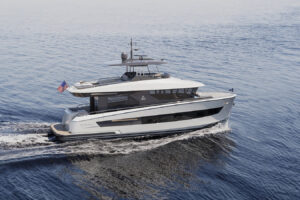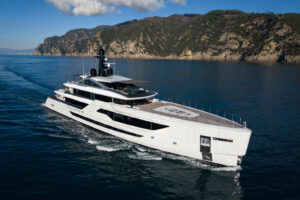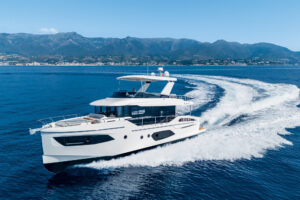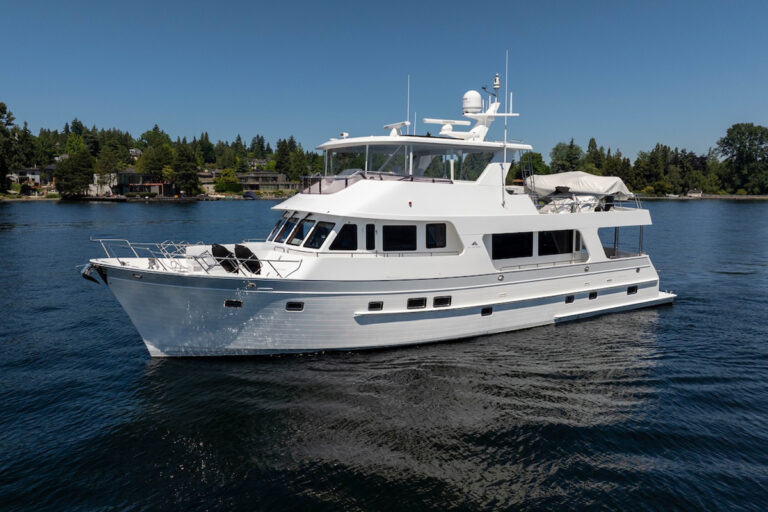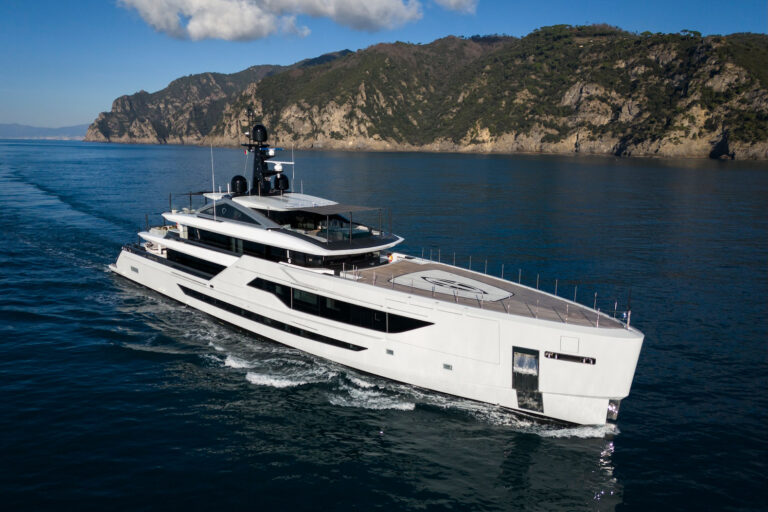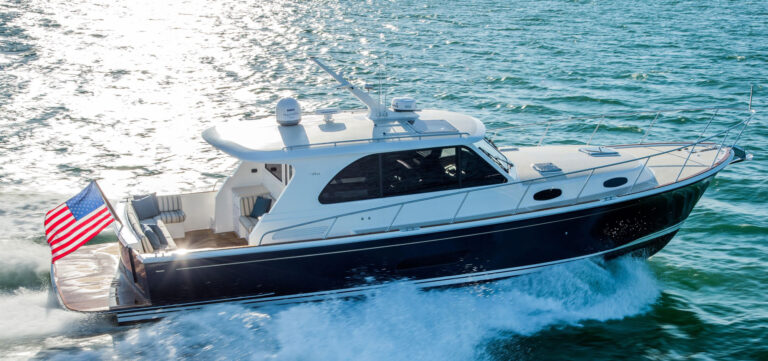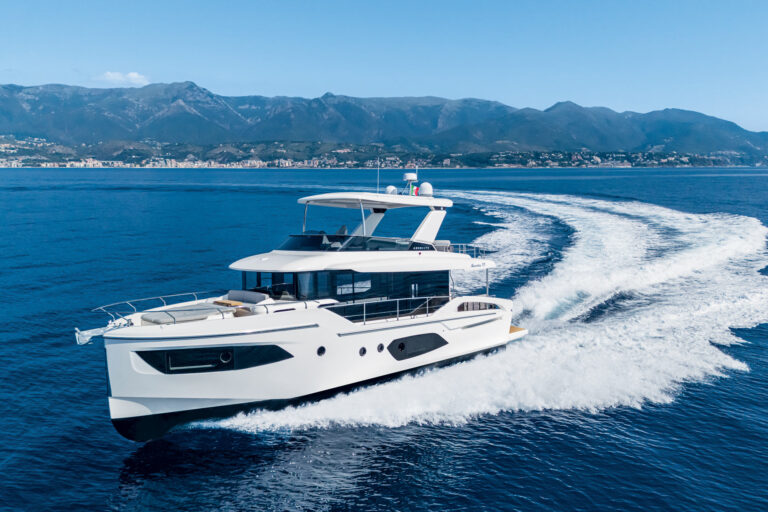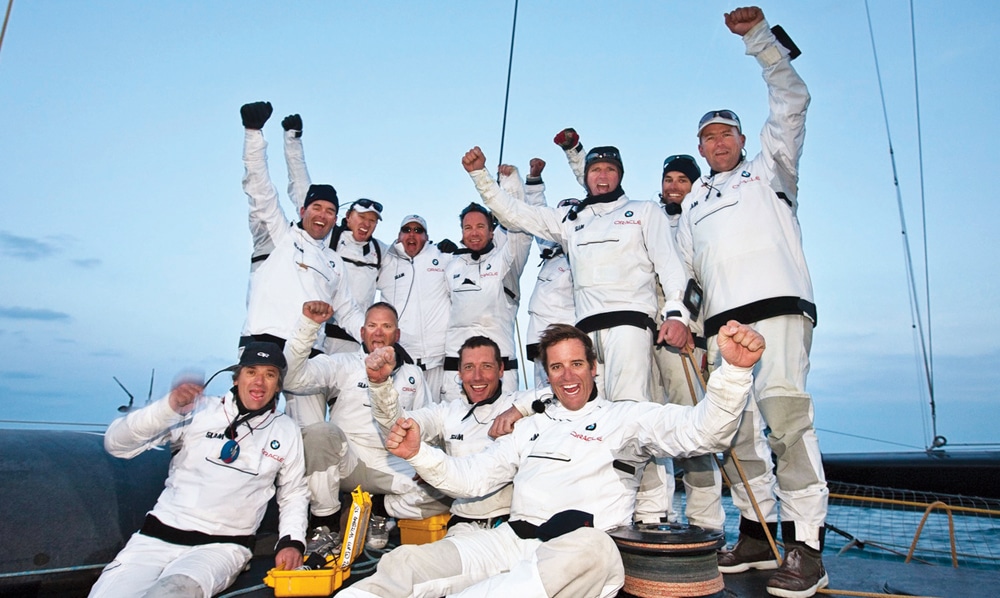
On Winged Victory
The America’s Cup was in jeopardy. It was not in danger of being surrendered by one competitor to another, but rather of sinking in a maelstrom of court filings, motions, and bitter boilerplate legalese. The worst of all outcomes was threatening: no races to honor the Cup and its glorious history. Throughout the court battles, there was no love lost between the heads of the competing syndicates, Cupholder Ernesto Bertarelli of Alinghi and Larry Ellison of BMW Oracle Racing.
After more than a year of wrangling, the legal system spit out the case, ordering a race to happen. And so it did, rendering a most simple end—a best-of-three race series—to a complex legal question that caused close reading and enforcement of the venerable Deed of Gift that sets forth the rules governing the Cup.
That’s why BMW Oracle Racing’s 114-foot trimaran, USA, met Alinghi 5, a 90-foot catamaran representing the Société Nautique de Genève, off the coast of Valencia, Spain. As in every America’s Cup race, technology played a role, but this time around it was heightened by the court-imposed time frame of the race. In the end, it pitted the wing-masted USA against the soft sails of Alinghi 5.
The BMW Oracle Racing team proved the wing to be king, but there is little chance of skyscraper-tall wing sails suddenly becoming the norm. For the team, the most stressful times were the process of stepping the wing mast. They decided to keep it in situ for the Cup, but couldn’t leave it even for a moment. A team of C-class catamaran specialists had to “baby-sit” USA’s 223-foot wing each night, for fear that a sudden gust would either capsize the trimaran or pull it from its mooring.
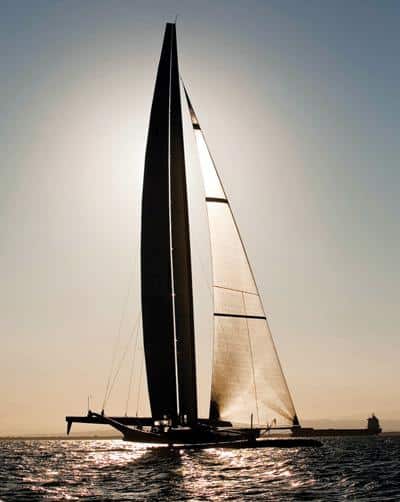
“You could say baby-sitting if that is what you call looking after King Kong,” says New Zealander Mike Drummond, the design director at BMW Oracle. “We’ve all had a lot of sleepless nights nursing it. The strongest gust we got exceeded 60 knots one night. So, no one got any sleep.” The wing borrowed technology from the “Little America’s Cup” C-class catamarans and lessons learned from the wing fitted on Dennis Conner’s Stars & Stripes catamaran, the successful defender in 1988. The wing on BMW Oracle’s USA is 36 percent bigger than the largest previous wing—on the A380 Airbus. “The America’s Cup is an engineer’s dream—what we were doing was unbelievable,” said Christoph Erbelding, an aeronautical engineer seconded to the project from the BMW Research and Innovation Center. “Anything you can imagine, whatever you dream up, that’s the type of thing we were working on.” The deadlines were so tight that as soon as a design came off the computer, it was put into production at the team’s base at Anacortes, Washington. With no time to build prototypes, all testing was full scale and in real time.
The carbon-fiber wing, covered in a light heat-shrunk film, has three elements: a rotating mast, the main wing, and nine adjustable rear flaps, just like those on an airplane wing. The settings are controlled by computer. “You rely much more on the instruments than on your eye,” said Dutchman Dirk de Ridder, the mainsail trimmer on USA, explaining the change in technique. “The first few days were difficult for me. I would think of it like a soft sail, and it’s not. You have to set the wing more to target numbers…you look at the heel angle, rudder angle, and boat speed and not at the sail itself.” The wing has dozens of orange tell-tales on it, but since De Ridder could not see through it, he had fellow crewman Joey Newton check whether the flow of air was connected on the leeward side or not.
The wing concept came too late for Alinghi to develop their own. “We considered it,” says Designer Rolf Vrolijk. “But with so little time available to us, we decided that we could only get 60 percent of the performance out of it, against 80 percent from the soft-sail rig.”
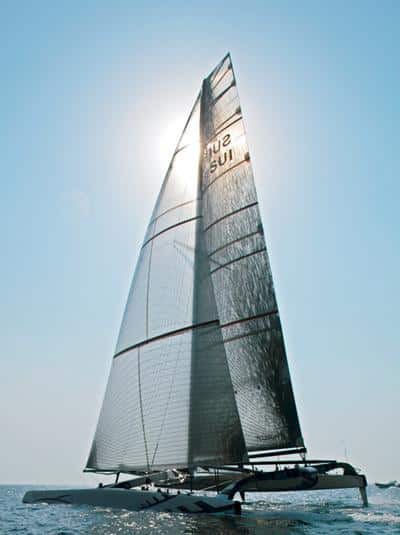
In the end, the soft-sail rig was no match for the wing. In the first race, USA could not only foot faster, but point three to four degrees higher. Such was its superiority, that her crew overcame a 660-meter deficit within 10 minutes of the start of race one, and rounded the windward mark 3 minutes, 21 seconds ahead—a time that translated into a massive 2,140-meter distance between the yachts. The end result of race one: USA won by a 15-minute, 28-second margin.
Bertarelli and Alinghi were hoping for light conditions—3 to 5 knots of wind and flat seas. On the day of the second race, the committee boat flew the postponement flag. Just as the building breeze and seas looked to exceed the conditions Bertarelli wanted at the end of a six-hour wait for wind, three members of the four-man race committee, representing Alinghi’s club, attempted to force New Zealander Harold Bennett, the Principal Race Officer, to cancel the day’s racing. He refused, and two of the three Swiss representatives went on strike. Furious but unbowed, Bennett enrolled the official committee-boat observer from the Golden Gate Yacht Club, Tom Ehman, to lower the postponement signal and ordered his Spanish boat driver to man the flags.
Alinghi benefited from a 20-degree shift in the wind, but once USA’s crew could crack off the traveler on the reach to the wing mark, the big tri creamed away, touching 33 knots at times, to set an average 12 percent faster than the Swiss catamaran. Though Alinghi was game and showed excellent speed, at one point leading the competition by more than 500 meters, the wing mast on USA was too much. Caught at the windward mark, Alinghi would never recover and ended up losing by 5 minutes, 26 seconds.
The advantages of technology will likely level out for the next America’s Cup, as the rules of engagement are drawn up and race dates and challengers are determined. One thing is for certain: Competition on the water beats that of the legal variety every time.

